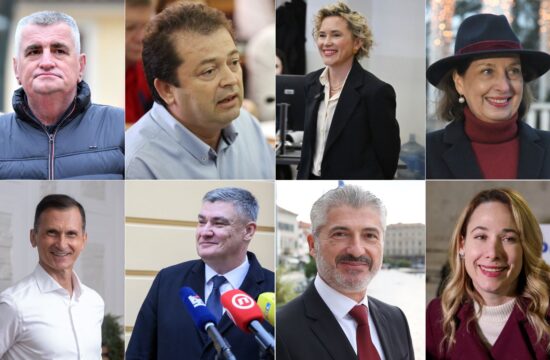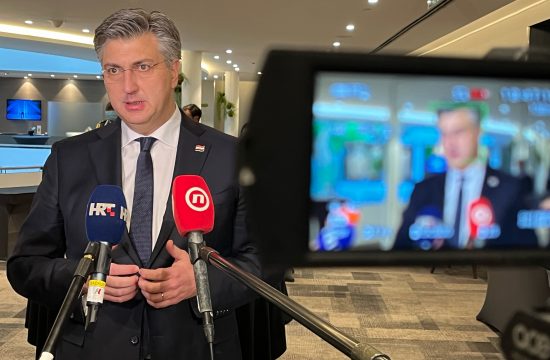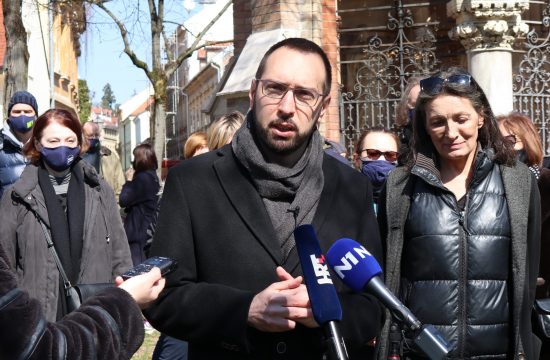
There were still stark divisions on key issues at the COP26 climate summit on Friday night, as talks went into overtime and appeared likely to go well into the weekend.
Around 6 p.m. local time, David Waskow, the international climate director at the World Resources Institute (WRI), said in a briefing that he expected “the next iteration” of the agreement text to come out in the next 12 to 24 hours. But it might not be the final version.
A source familiar with the talks told CNN that it was almost certain another draft agreement would come before a final one and possible even a fourth draft would be required before any official deal. The source suggested that could take talks into Sunday.
Negotiators have been in talks for 12 days, including some heated sessions this week over everything from language around fossil fuels, the rules of carbon markets and who should pay for the impacts of the climate crisis.
All 197 parties in attendance will need to agree on each and every word of the final agreement, so further watering down of the current draft, which was published early Friday, is entirely possible.
A group of climate analysts attending the summit noted in a briefing email that “battles over loss & damage, carbon markets and finance” were flaring.
“This is a test of COP President Alok Sharma’s nerve and whether he can deliver ambitious outcomes where there isn’t obvious consensus,” the group wrote.
COP conferences typically run over time, but there had been an expectation that a full agreement could be reached Friday night or early Saturday. Sharma had optimistically said all week he hoped for a deal by 6 p.m. Friday.
There is a clear split between developed and developing nations around whether a new “loss and damage” fund should be established through which wealthy countries would pay liability to developing countries for the impacts of the crisis on their countries. Developing nations believe wealthy countries are historically more responsible for the climate crisis, but the impacts are disproportionately felt in the developing world.
A senior US official said Thursday does not support the creation of a loss and damage compensation fund.
An EU spokesperson declined to confirm the bloc’s position, but pointed to remarks by its climate policy chief Frans Timmermans made earlier Friday, saying that loss and damage “is a key part of our conversation.”
“It’s time to move and find the solutions that will help vulnerable countries respond to the damage and destruction the climate crisis has already caused,” he said. “We can find a way out of this, I’m sure, together in a cooperative atmosphere.”
Lorena Gonzalez, senior associate for UN Climate Finance with WRI’s Finance Center, said: “It is highly unlikely that either group of parties developed countries or developing countries will actually get their preferred option when it comes to the financial options for loss and damage.”
The flurry of talks to preserve a deal came after a second draft of the agreement was published on Friday morning. That draft included unprecedented language around fossil fuels, despite a fierce campaign from some major coal, oil and gas producers to have it removed entirely.
While it shows a good amount of political progress, it essentially defers more action on emissions to COP27, which will be in Egypt. That means it doesn’t quite reflect the urgency expressed by international scientists in their key “code red for humanity” climate report published over the summer.
Here’s what was in that draft:
Fossil fuels get a mention
The fact that any mention of fossil fuels survived the editing cull is a win for the COP26 presidency, particularly in its current form, which calls for the phasing out of unabated coal and an end to fossil fuel subsidies.
There is a huge chance fossil fuels may not make the final text at all, or be further weakened, but having it in the second draft so close to the final agreement puts enormous pressure on major fossil fuel producers. Saudi Arabia, China, Russia and Australia were trying to have the article on fossil fuels either weakened or removed, according to two sources familiar with the talks. Saudi officials declined to comment on the issue, while Chinese, Australian and Russian officials have not responded to CNN’s request for comment sent Thursday.
If the language makes it into the final text, it will be the first time a Conference of the Parties climate agreement makes any mention of the role of coal, oil and gas, the biggest contributors to the human-made climate crisis.
However, the new version of the paragraph is weaker than the initial draft published on Wednesday, indicating just how tough the fight over its inclusion was. The new text calls for the acceleration of “the phaseout of unabated coal power and of inefficient subsidies for fossil fuels.”
The added word “unabated” essentially means countries could continue to use coal if they are able to capture large amounts of the carbon dioxide they emit. The concept is controversial as the technology to fully capture greenhouse gases is still in development. And “inefficient” was also added, leaving that part of the agreement fairly open to interpretation.
“It’s always a bit of a tradeoff. The fact that we’ve got the phaseout of fossil fuel subsidies and the phaseout of coal in the text is really new and important,” Helen Mountford, vice president of climate and economics at the World Resources Institute, said in a briefing.
“The fact that they’ve added in ‘unabated’ in front of coal and ‘inefficient’ in front of fossil fuel subsidies, compared to the text a couple of days ago, is definitely going back to some more comfortable negotiated language in other fora. So I would expect that some countries like Saudi Arabia would have been pushing for adding the inefficient in front of the fossil fuel subsidies.”
Chris Littlecott, associate director at E3G, said the addition of the word “unabated” doesn’t necessarily create a new loophole. He said it reflects the current thinking on emissions.
“We’ve seen that a well crafted regulatory framework calls the bluff of the coal industry. It says, okay, if you really want to use coal, you’ve got to invest in carbon capture and storage … and what we’ve seen over the last 15 years is that the coal industry has not been willing to do that,” he told CNN.
Bolder emissions deadline is retained but some watering down
To limit global warming to 1.5 to 2 degrees, as agreed under the 2015 Paris Agreement, every country needs to have a plan that aligns with that goal.
Under Paris, all signatories were required to submit new, more ambitious plans this year. But while there have been some improvements, a key analysis by Climate Action Tracker published this week showed the world is on track for 2.4 degrees of warming. That would mean the risks of extreme droughts, wildfires, floods, catastrophic sea level rise and food shortages would increase dramatically, scientists say.
The draft agreement “requests” that countries go back to the drawing board and come back with stronger plans by the end of next year. That is a positive development, because it gives a precise deadline on when these should be delivered. Under Paris, countries were only required to do this by 2025.
However, this new draft gives countries some wiggle room by adding that “different national circumstances” would be taken into account. That comes after a group of developing countries suggest they should not be held to the same standards as wealthy nations, which historically have a much greater role in the climate crisis that developing ones.
The Friday draft agreement, published by the COP26 presidency, also retains language saying the world should be aiming to limit global warming to 1.5 degrees Celsius above pre-industrial levels.
The document “recognizes that the impacts of climate change will be much lower at the temperature increase of 1.5 °C compared to 2 °C and resolves to pursue efforts to limit the temperature increase to 1.5 °C.”
To do that, “rapid, deep and sustained reductions in global greenhouse gas emissions” are required, the document says. That language is in line with the latest science, which shows the world must limit global warming to 1.5 degrees Celsius above pre-industrial levels in order to avoid the climate crisis worsening and approaching a catastrophic scenario.
While it’s progress on the political level, the agreement is far weaker than what scientists say is necessary for the world to contain global warming to 1.5 degrees above pre-industrial levels. The most recent UN climate science report showed that the world needs to nearly halve emissions over this decade to keep that limit within reach.
A doubling on funding for developing nations to adapt to the crisis
A divide remains between developed and developing nations, which is common at these annual conferences. This year that centers around one key issue — who should pay for the developing world to adapt to the climate crisis. Also issues of funding for the Global South’s green transition and the possibility of a type of climate compensation for the impacts vulnerable nations are dealing with.
On Thursday, Bolivia’s chief negotiator Diego Pacheco said his country and 21 other allied nations — including major emitters like China, India and Saudi Arabia — would oppose the entire section on reducing emissions for several reasons, including the lack of finance from the developed world.
Rich countries agreed more than 10 years ago to transfer $100 billion a year to developing nations to help their transformation to low-carbon economies and to adapt to the climate crisis. Adaptation can involve anything from building sea walls to prevent flooding, to moving communities back from the coast and retrofitting homes to netter withstand extreme weather events.
Not only has the rich world failed to deliver the $100 billion by the 2020 deadline, developing nations say it’s nowhere near enough in the first place. They also want a 50-50 split between mitigation — measures to reduce emissions — and adaptation. Far more money has flowed to measures focused on cutting emissions.
At the moment, the draft agreement says $40 billion should go to adaptation, so the gap is narrowing.
“Overall, I do think what we’re seeing here is the text is more balanced in favor of some of the issues that the vulnerable countries in the developing countries have been pushing for,” Helen Mountford, vice president of climate and economics at the World Resources Institute, said in a briefing.
It also mentions for the first time a new system to pay for “loss and damage,” which essentially involves wealthy countries being held financially liable for the impacts of the climate crisis. The US and EU are opposed to that measure.
And while the first draft “noted with serious concern” that money provided to developing countries to deal with the climate crisis was insufficient, the latest draft only omits the word “serious.”





Kakvo je tvoje mišljenje o ovome?
Budi prvi koji će ostaviti komentar!